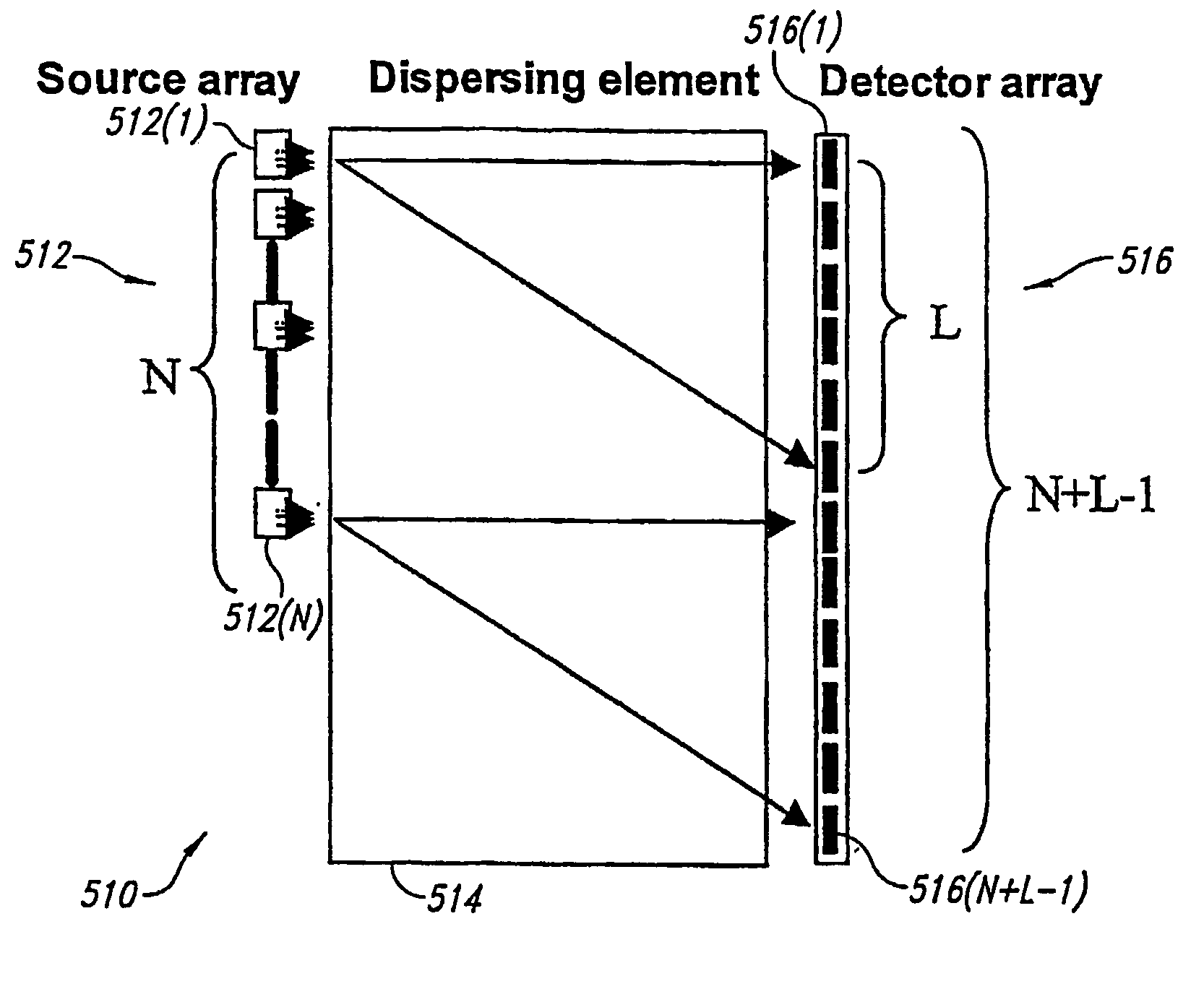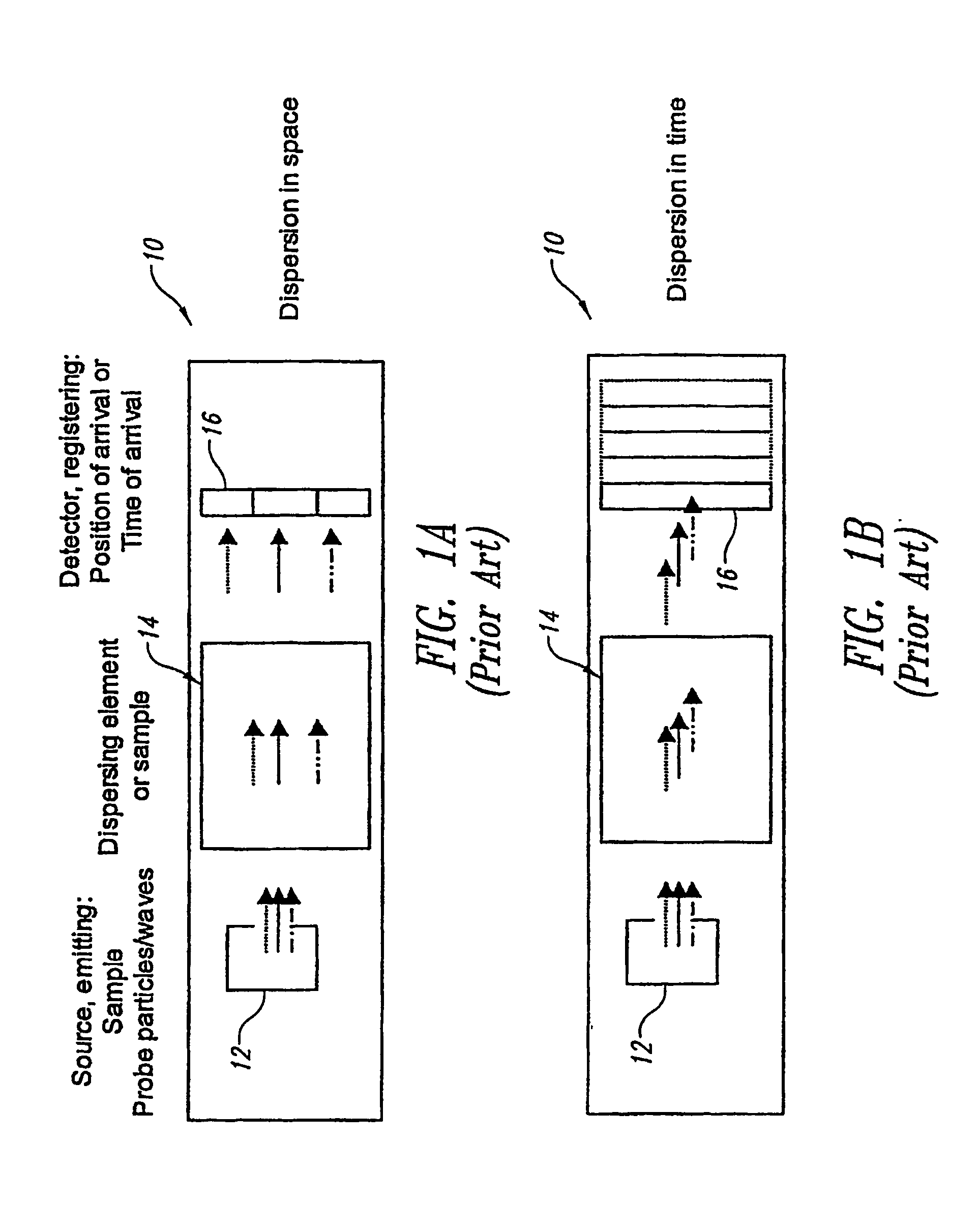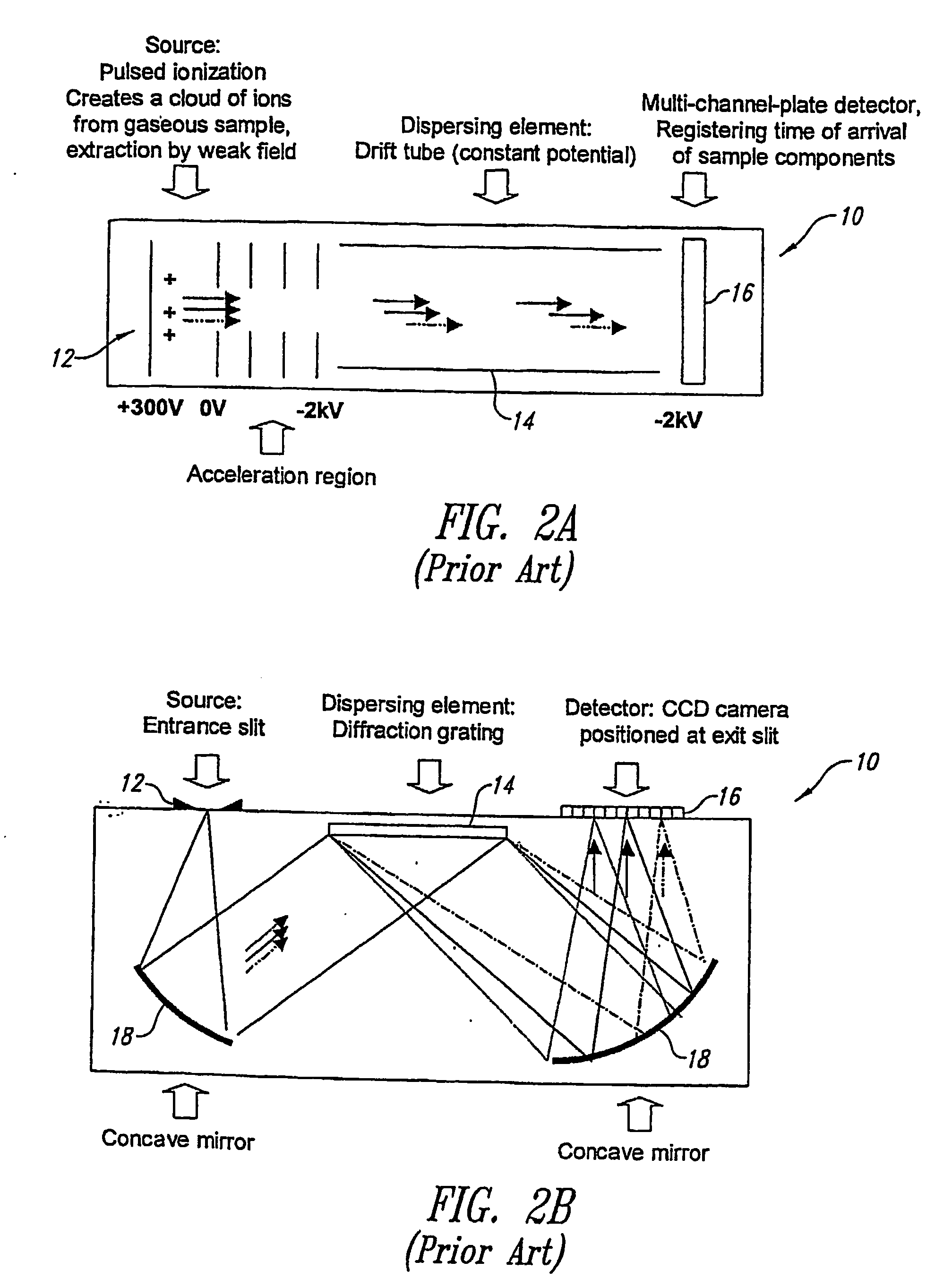Analytical instruments using a pseudorandom array of sources, such as a micro-machined mass spectrometer or monochromator
- Summary
- Abstract
- Description
- Claims
- Application Information
AI Technical Summary
Benefits of technology
Problems solved by technology
Method used
Image
Examples
embodiment
Mass Spectrometer Embodiment
[0076] In one embodiment, a mass spectrometer (“MS”) embodies an assembly of (i) N ion sources, (ii) a mass separator and (iii) a detector array. The detector array has m*(N+L−1) units (m=1, 2, 4) depending on the overall MS lay-out, where L is the length of the mass spectrum (L<=N). A first embodiment takes the form of a non-scanning mass spectrometer, while a second embodiment takes the form of a scanning system. The MS has N=2n−1 subunits where n is an integer. The source array consists of emitting and non-emitting units, arranged in the so-called pseudorandom sequence. The non-emitting units may take the form of sources rendered temporarily or permanently incapable of emitting, or of blanks (i.e., space holders incapable of emitting in any situation). The source array can be made planar-linear, as illustrated in FIG. 5, but is not limited to this layout.
[0077] The detector can be any position sensitive particle detector, its effective spatial resolut...
PUM
 Login to View More
Login to View More Abstract
Description
Claims
Application Information
 Login to View More
Login to View More - R&D
- Intellectual Property
- Life Sciences
- Materials
- Tech Scout
- Unparalleled Data Quality
- Higher Quality Content
- 60% Fewer Hallucinations
Browse by: Latest US Patents, China's latest patents, Technical Efficacy Thesaurus, Application Domain, Technology Topic, Popular Technical Reports.
© 2025 PatSnap. All rights reserved.Legal|Privacy policy|Modern Slavery Act Transparency Statement|Sitemap|About US| Contact US: help@patsnap.com



